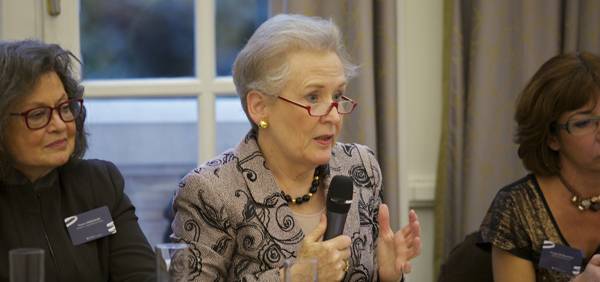International Forum Highlights Dearth of Women on Corporate Boards
Their relative absence and ways to remedy the situation was among the issues explored at the Council on Business and Society’s inaugural forum in Paris.

In large swaths of the developed world, women have climbed to the highest ranks of government, academia, and the professions.
Women now receive more than 40 percent of MBAs and law degrees—yet when it comes to corporate boards, they’re still on the wrong side of the glass ceiling, looking up. Just 16 percent of Fortune 500 board members are women, a figure that looks good only when compared with the 11 percent that are directors at smaller U.S. firms.
The relative absence of women from boardrooms and how to remedy the situation was the focus of a spirited exchange at the Council on Business and Society’s inaugural International Forum in Paris in November. With a theme of “Corporate Governance and Leadership: Business Performance and Responsibility,” this year’s forum explored fundamental questions of how companies are governed and how they are led.
Noreen Doyle T’74, one of two women on Credit Suisse’s 15-member board, told the conference that though she opposes mandatory gender quotas like those in Norway, the threat of quotas in the United Kingdom and elsewhere in Scandinavia has led to improvements in those countries.
Fairness aside, does the presence of women on boards improve corporate performance? Research on the subject has been inconclusive, said Karin Thorburn, a finance professor at the Norwegian School of Economics and a visiting professor at Tuck. There is some evidence that the presence of women on boards correlates to greater shareholder value, though researchers have been unable to show a causal link. However data does show that when women are on boards, the educational level of the board rises, attendance at meetings improves, and boards may focus more on stakeholders such as employees.
Doyle and Thorburn were joined on a panel by Susan Lindenauer, who serves on the board of Legal Momentum: The Women’s Legal Defense and Education Fund, and Vivane de Beaufort, a professor at France’s ESSEC School of Business and a leader of the country’s Radical Party.
Norway’s experiment in quotas began in 2008, after large companies failed to reach voluntary targets. Under threat of dissolution by the government, corporations increased the share of women on boards to 42 percent. “We have seen little change without legal action,” said Thorburn.
A firm quota isn’t possible in the U.S., where the courts have ruled that such systems are unconstitutional. Yet a greater presence of women on large-company boards demonstrates that these firms have bought into the idea of diversity or at least want to be seen as diverse. Corporations need not look far for an example of better boardroom gender diversity: women hold 43 percent of slots on non-profit boards of directors.
Founded in 2011 as a partnership of Dartmouth’s Tuck School of Business (U.S.), Keio Business School (Japan), University of Mannheim Business School (Germany), Fudan University School of Management (China), and ESSEC Business School (France), the Council on Business and Society aims to marshal member schools’ combined research and teaching resources to foster debate about the role of business in an increasingly complex and interconnected world.